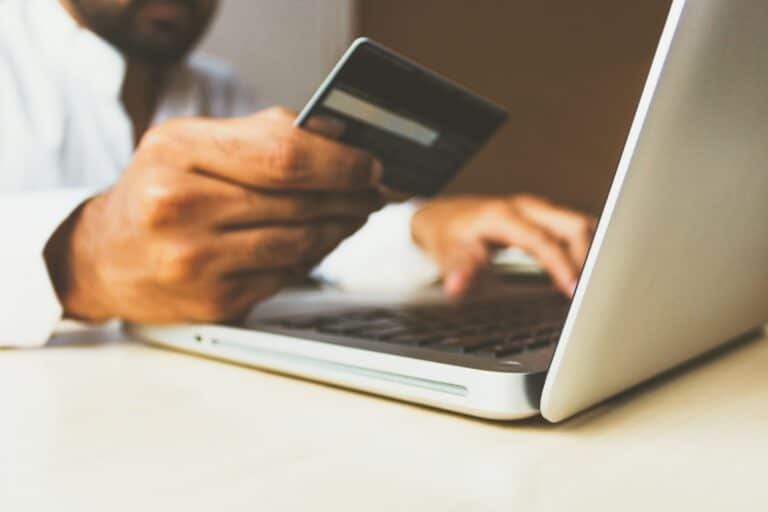Whether you’re looking for a gift, course, or spare part, it’s never been easier to satisfy your shopping needs with a one-click purchase. Such convenience can come at the cost of security, which is why you’ll want to do the following before entrusting third parties with your valuable data.
1. Make Sure the Website You’re Buying from Is Secure
Checking whether a website protects any communication you have with it is the simplest and among the most effective safeguards. Secure websites use the SSL protocol to encrypt the data you enter, which scrambles any PINs, personal information, etc. and makes them unusable to would-be thieves.
Most websites use SSL nowadays. Check that the one you want to buy something from starts with https with a padlock to the left of its name.
2. Give Out as Little Info as Possible
You can’t get the goods you need without providing a name, shipping address, and payment method. Still, some sites have much less reasonable demands. Think twice before you sign up for an account that asks for an invasive amount of personal information.
Banks protect clients from fraudulent activity and will reimburse you. However, it’s impossible to reverse the potential damage a data breach involving your personally identifiable information can cause.

3. Take Password Protection Seriously
You might have only a few PINs to remember, but every online store insists on a new account. You’re putting your finances and personal information at risk each time you reuse a password or go with one anyone could guess.
Rather than a liability, unique and strong passwords serve as a first line of defense against intrusion. Never share them with anyone or make it easy for others to find them. Consider using an Android password manager (they usually are compatible with iOS and Windows, too) to store and create new passwords for all your accounts.
4. Use Biometrics and Multifactor Authentication
A robust password will do for most accounts, but securing your payments requires a further step. Specifically, multifactor authentication prevents payments from going through until you provide additional proof.
This can be in the form of a code your bank sends via SMS or something more advanced like a fingerprint or voice identification. Either way, someone who stole your password and is trying to pay for something from an unknown location won’t be able to go through with it without that code.
5. Keep Track of Your Financial Reports
Hackers are very good at stealthily compromising financial transactions and stealing your data. Usually, the first warning signs show up as suspicious and unrecognizable transactions on your credit card reports and other statements.
It’s crucial and common sense to look into your finances regularly. Go to your bank’s official website and request a statement, or visit your branch and inquire there. Its fraud prevention team will help you freeze the account and establish a more secure means of access.
6. Secure Your Internet Connection with a VPN
While generally trustworthy, the means businesses and banks employ to protect your financial transactions aren’t 100% safe. For example, the best safeguards are worthless if someone can tap into your internet connection, observe the information you type in real-time, and steal any credentials you expose.
That’s exactly what can happen if you’re foolish enough to make online purchases over public Wi-Fi. VPNs address such security concerns by enveloping the entire internet connection inside an encrypted tunnel. This prevents anyone monitoring the connection from accessing any data you exchange with any website. Moreover, VPNs route traffic through different servers, ensuring the anonymity and privacy of the original connection.
7. Be Wary of Social Engineering
The financial sector tops the cyberattack priority list, and social engineering attacks targeting unsuspecting clients are frightfully effective. Phishing is the most common and involves sending scam messages via email.
These look like urgent requests from financial institutions asking you to provide your bank details to settle some problems. Your bank already has all the information on you and your account, so it doesn’t need to ask.
Still, people will fall for the request and go to spoofed sites to feed their information right into the crooks’ hands. Learn to read the signs and always contact your bank to verify such requests before doing something you’ll regret.
8. Check for Compliance
Financial institutions are privy to some of the most sensitive information out there. They take its protection seriously and demand the same from the vendors they support. Information security and privacy have also become a fundamental societal concern, as evidenced by laws states and countries are adopting to strengthen their citizens’ rights.
Any website you buy from should be transparent about its compliance status. Make sure they adhere to payment protection standards like PCI DSS and respect customer rights as outlined by laws like the GDPR.


